
The 20 Best Spanish Textbooks in 2024
No matter what level you’re at, you want to choose the right Spanish textbook to support your learning.
But with so many options to choose from, the search can feel overwhelming.
To help you out, we’ve compiled a list of the 20 best Spanish textbooks for learning the language.
They include standard textbooks for every level and a few reference books. All of these options have proved themselves highly valuable for Spanish learners.
Contents
- Best Spanish Textbooks for Beginners
- Best Intermediate Spanish Textbooks
- Best Advanced Spanish Textbooks
-
- 12. “The Ultimate Spanish Review and Practice”
- 13. “Advanced Spanish Step-by-Step”
- 14. “Advanced Spanish Grammar: A Self-Teaching Guide”
- 15. “Palabra por Palabra: Spanish Vocabulary for Edexcel A-level”
- 16. “A New Reference Grammar of Modern Spanish”
- 17. “Hablar por los codos: Frases para un español cotidiano”
- Best Spanish Reference Books
- And One More Thing…
Download: This blog post is available as a convenient and portable PDF that you can take anywhere. Click here to get a copy. (Download)
Best Spanish Textbooks for Beginners
1. “First Spanish Reader: A Beginner’s Dual-Language Book”
This book not only teaches Spanish but has 41 selections of short stories to boot, advancing from basic verb forms to the future and conditional tenses.
The source text is written by well-known Spanish and Latin American writers and captures the richness of their respective cultures.
And because this is a dual-language book, the English translations are found on the opposite pages and the stories are followed by exercises and a glossary.
2. “Complete Spanish Step-by-Step”
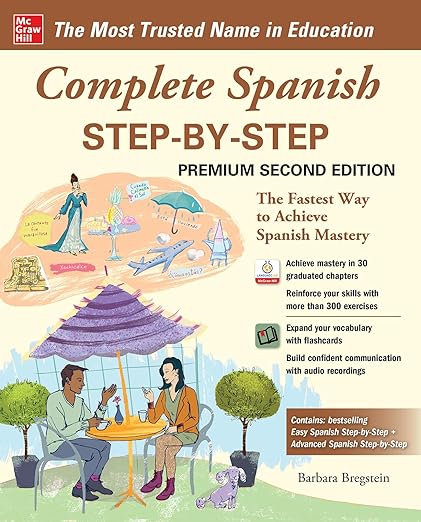
With its building block approach, this is an excellent book for Spanish learners of all levels, including absolute beginners.
It combines two bestselling Spanish textbooks, “Easy Spanish Step-by-Step” and “Advanced Spanish Step-by-Step” into one easy-to-use guide.
The book includes verb terms, exercises and readings. Plus, with the McGraw-Hill Language Lab app, you’ll get audio recordings of the answers to all 150 exercises from the book.
3. “Madrigal’s Magic Key to Spanish”
This book uses innovative, non-traditional methods to teach grammar, starting with the past tense.
It’s well-paced, clearly structured and presented in a no-nonsense manner. It weeds out needless complications and accelerates language acquisition.
One of the most important features of the book is the drills that painlessly incorporate vocabulary and improve conversational skills.
4. “Complete Spanish Grammar”
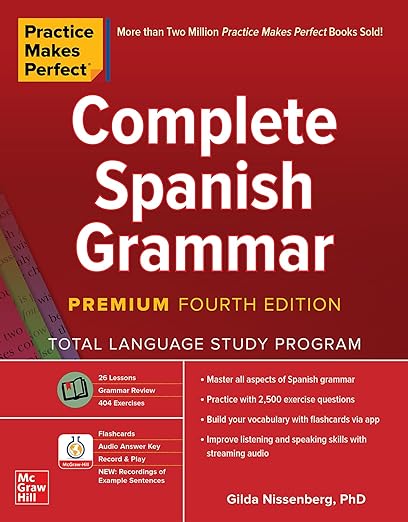
This comprehensive grammar book focuses on Spanish as a spoken language, rather than as a written one—so you can be sure that it’s eminently practical.
Of the 8 books in the set, this will be your “practice” book. There are 350 workbook exercises to put your Spanish through its paces.
Each lesson comes with a thorough evaluation, as well as activities that allow you to discover where the gaps in your understanding lie. There are additional support materials available online.
5. “The Everything Learning Spanish Book”
This book will guide you through basic concepts like pronunciation, basic grammar rules and common vocabulary and phrases.
The textbook offers 20 chapters. Each chapter presents simple lessons along with examples to help you see what you’ve learned in action.
There’s also a helpful glossary of vocabulary (English-to-Spanish and Spanish-to-English) to refer back to when you’re not familiar with a word.
6. “Ultimate Spanish: Beginner-Intermediate”
This book is designed to teach you Spanish from scratch. If you do have some previous experience, it will carry you right into the intermediate level.
The book offers 40 lessons that include dialogues, grammar rules, usage rules, pronunciation information, cultural lessons and more.
Quizzes interspersed throughout will help you check your progress, while the glossary will provide a great reference for you to refer back to when you’re unsure of something.
Best Intermediate Spanish Textbooks
7. “Practice Makes Perfect: Spanish Conversation”
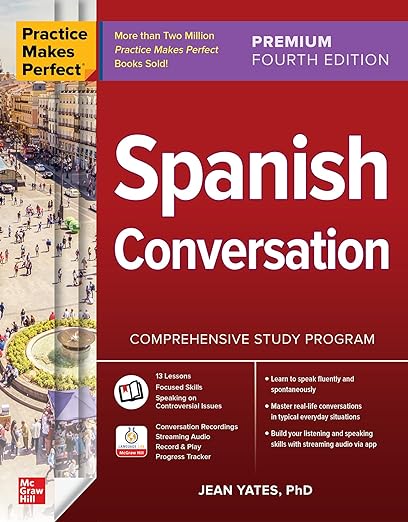
Published in January 2024, this is the newest version of a highly-rated Spanish textbook for intermediate learners.
The book uses exercises involving dialogues from common everyday scenarios so you can practice the language the way it’s used in real life.
On the accompanying language lab app, you’ll find audio recordings of the dialogues in the book so you can practice your listening and pronunciation.
8. “No Nonsense Spanish Workbook”
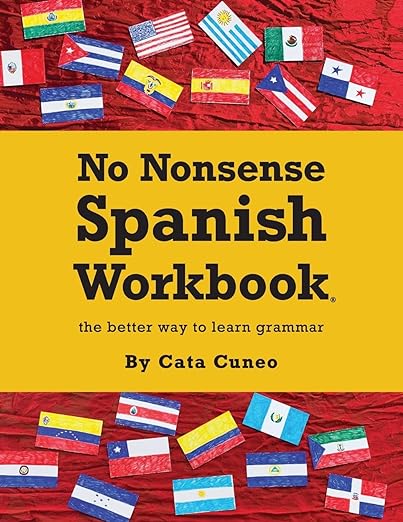
This book is intended for beginners through advanced intermediate learners.
It includes plenty of hands-on activities including chapter quizzes, creative writing activities and vocabulary exercises—and the answer key is included at the back.
Best of all, it’s designed to help with the specific areas that learners often struggle with, based on the author’s experience tutoring students of all ages and levels.
9. “Intermediate Spanish for Dummies”
This book puts intermediate-level rules in terms that are easy to understand. It also includes a brief refresher on basic Spanish.
Each chapter is organized thematically with useful topics like “10 most common writing mistakes in Spanish” and “expressing yourself with subjunctive feeling.”
The book aims to expand your vocabulary, learn new conjugations and hone your writing skills. Plus, activities in the book help you practice as you learn.
10. “Conversemos! Intermediate Conversation”
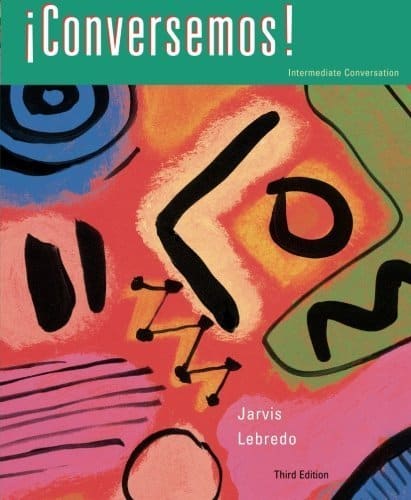
This is an official college textbook. Its main aim is to help improve your conversation skills.
You’ll learn valuable conversational tools like giving commands, sharing preferences and persuading others. A variety of activities will help you practice these skills.
Plus, if you don’t have anyone to practice your Spanish conversational skills with—never fear! The accompanying CD will help you with the spoken language.
11. “Gramática de uso del Español B1-B2”
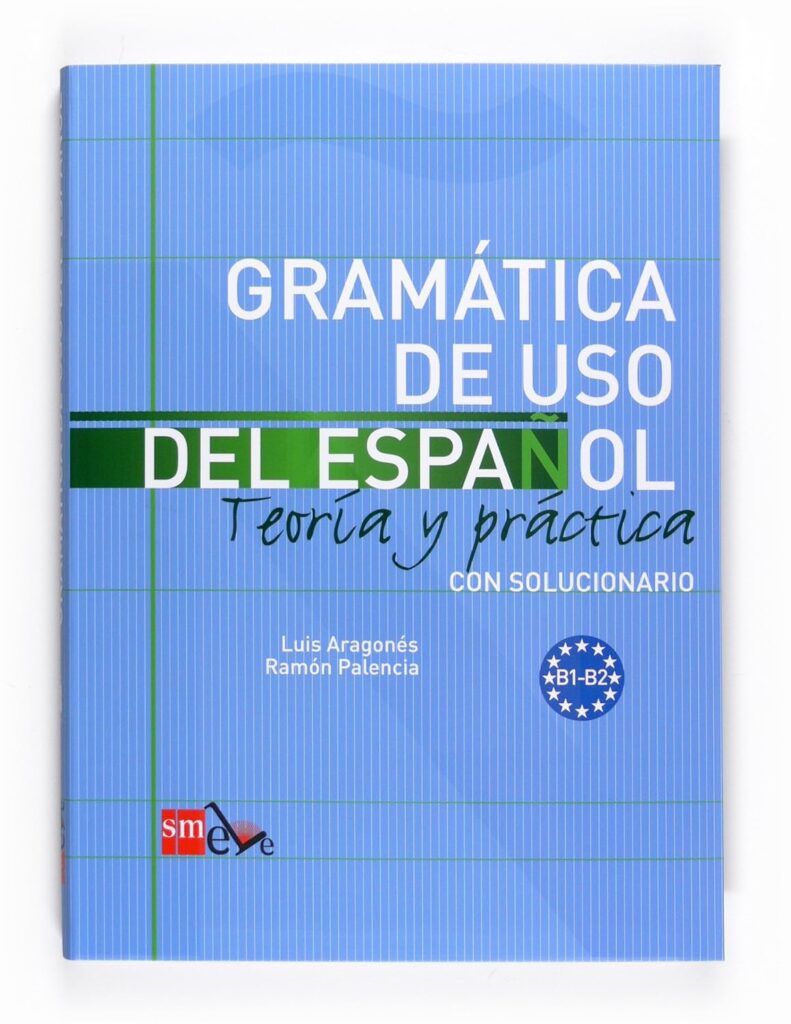
This theory and practice book is part of a 3-book series covering A, B and C levels.
It comes with clear grammatical explanations and over 400 practice exercises with an answer key. Just be warned—the explanations are all in Spanish, so it’s definitely not for beginners.
The book is well-organized, with a short unit on grammar on one page and corresponding exercises on the next, which makes it great for self-study.
Best Advanced Spanish Textbooks
12. “The Ultimate Spanish Review and Practice”
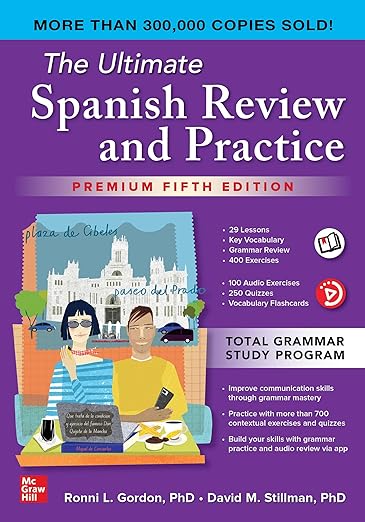
This book is ideal for advanced beginners through advanced learners who want to improve their Spanish grammar skills and communicate even more fluently.
It’s chock full of over 400 exercises, illustrations, example sentences, flashcards, interactive quizzes and pre- and post-tests to see how well you’ve retained your information.
In addition, there are extensive audio exercises to help you further your pronunciation and conversational skills.
13. “Advanced Spanish Step-by-Step”
“Advanced Spanish Step-by-Step” focuses on helping you develop more vocabulary, master complex grammar rules and understand advanced conjugations.
All in all, this book aims to make you more confident with speaking and understanding the Spanish language.
With 15 progressive steps, the book provides you with a clearly structured learning plan with grammar lessons, reading excerpts and 150 exercises interspersed throughout.
14. “Advanced Spanish Grammar: A Self-Teaching Guide”
This book is designed for any advanced student who wants to improve their grammar. It offers advanced grammar rules, difficult conjugations and over 1,000 vocabulary words.
The ¡Atención! (Attention!) sections are particularly useful since these highlight some of the most problematic issues with the Spanish language.
Plus, this book is interactive, so you’ll have an opportunity to practice your new skills with helpful activities.
15. “Palabra por Palabra: Spanish Vocabulary for Edexcel A-level”
This textbook focuses on expanding your vocabulary and improving your authentic Spanish by teaching you useful idioms and common phrases.
The book is organized thematically so that you can easily select topics of interest. For instance, some sections include descriptions of people, work, the media, etc.
If you’re already familiar with all your Spanish grammar, this is a good way to learn the vocabulary you need to nudge you closer to full fluency.
16. “A New Reference Grammar of Modern Spanish”
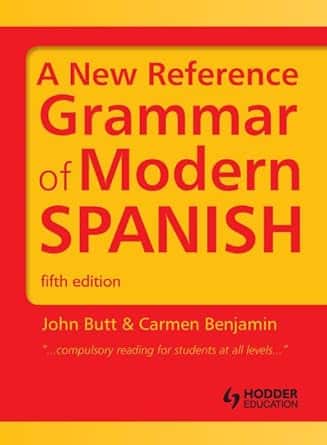
This book is great at explaining those fine details of the more complex aspects of Spanish grammar in a way that you can actually understand.
You can easily skip to whatever topic you need to work on, or take it chapter by chapter for a more complete and structured learning process.
The book is extremely comprehensive, covering pretty much everything you need to know about the Spanish language. Just read some of the reviews if you’re unsure!
17. “Hablar por los codos: Frases para un español cotidiano”
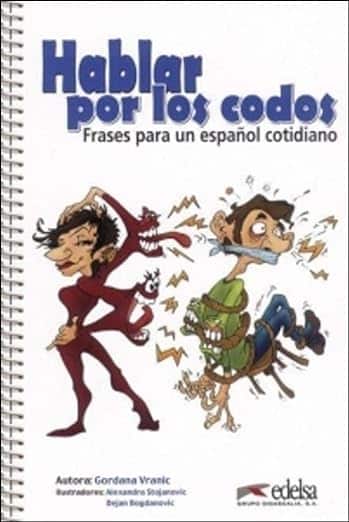
This book includes 175 colloquial expressions and phrases and 45 sayings used by European Spanish speakers in their everyday speech.
Each one comes with an illustration to show its meaning, examples of how it’s used and a set of exercises for hands-on practice.
By doing these exercises, you won’t just be reading the expressions and hoping to remember them. You’ll actually be engaged in the learning process!
Best Spanish Reference Books
Barron’s Foreign Language Guides are standard in anyone’s language library and there’s a good reason why. In this series, there’s a book that focuses on vocabulary, another for verbs and a third for grammar.
These books will help you improve your Spanish whether you’re just beginning your language journey or looking to brush up.
18. “Mastering Spanish Vocabulary”
This book covers the essential language foundation of vocabulary. It’s organized by theme, which is incredibly helpful if you’re searching for something specific.
It also comes with online audio so you can read the words and hear them. This will help you learn the proper pronunciation of new words.
The book presents more than 13,000 entries and the audio is approximately 10 hours long, so you’ll have plenty of content to work with.
19. “Barron’s 501 Spanish Verbs”

This book will introduce you to all the most commonly encountered verbs in the Spanish language, conjugated in all 15 moods and tenses.
The verbs in this book are accompanied by many examples in Spanish and English. There’s also online audio to help you review.
The introduction is dedicated to explaining the different tenses and when it’s appropriate to use them. Then the book segues seamlessly into teaching you different verbs in each of these tenses.
20. “Barron’s Pocket Spanish Grammar”
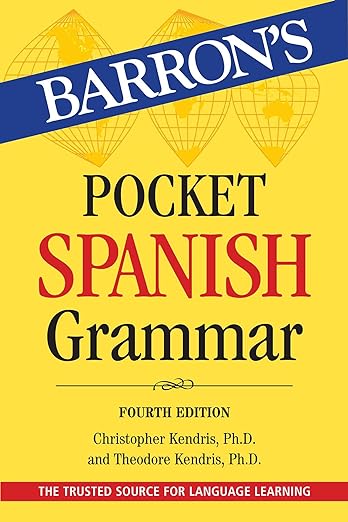
With this pocket-sized book, grammar doesn’t have to be so intimidating. You won’t find long, overwhelming lists of grammatical rules here.
Instead, you’ll find boxes with tips in bold font, highlighted key points and memorization techniques. These features make the content more engaging.
The lists that are in the book are easy to scan and study. And you can carry it around with you!
If you want to pair your Spanish textbook with an immersive program to learn how native Spanish speakers really talk, you can use a program like FluentU.
FluentU takes authentic videos—like music videos, movie trailers, news and inspiring talks—and turns them into personalized language learning lessons.
You can try FluentU for free for 2 weeks. Check out the website or download the iOS app or Android app.
P.S. Click here to take advantage of our current sale! (Expires at the end of this month.)

With this selection of the best Spanish textbooks, you can’t go wrong. Choose one that calls to you and get ready to boost your language skills!
Download: This blog post is available as a convenient and portable PDF that you can take anywhere. Click here to get a copy. (Download)
And One More Thing…
If you've made it this far that means you probably enjoy learning Spanish with engaging material and will then love FluentU.
Other sites use scripted content. FluentU uses a natural approach that helps you ease into the Spanish language and culture over time. You’ll learn Spanish as it’s actually spoken by real people.
FluentU has a wide variety of videos, as you can see here:

FluentU brings native videos within reach with interactive transcripts. You can tap on any word to look it up instantly. Every definition has examples that have been written to help you understand how the word is used. If you see an interesting word you don’t know, you can add it to a vocab list.

Review a complete interactive transcript under the Dialogue tab, and find words and phrases listed under Vocab.

Learn all the vocabulary in any video with FluentU’s robust learning engine. Swipe left or right to see more examples of the word you’re on.

The best part is that FluentU keeps track of the vocabulary that you’re learning, and gives you extra practice with difficult words. It'll even remind you when it’s time to review what you’ve learned. Every learner has a truly personalized experience, even if they’re learning with the same video.
Start using the FluentU website on your computer or tablet or, better yet, download the FluentU app from the iTunes or Google Play store. Click here to take advantage of our current sale! (Expires at the end of this month.)

















